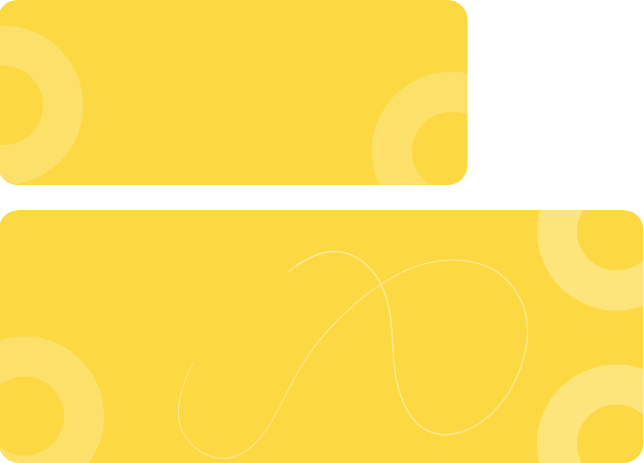Introduction to Tarot Card Readings

Tarot cards have captivated people for centuries, offering a window into the mysteries of life, self-discovery, and guidance. In this beginner’s guide, we will explore the enchanting world of tarot card readings and provide you with the essential knowledge and steps to embark on your own tarot journey.
What are Tarot Cards?
Tarot cards are a deck of 78 cards that contain rich symbolism and archetypal imagery. These cards are divided into two main categories: the major arcana and the minor arcana. The major arcana consists of 22 cards that represent significant life events and spiritual lessons. The minor arcana consists of 56 cards divided into four suits—Wands, Cups, Swords, and Pentacles—that represent various aspects of daily life.
Brief History of Tarot Cards
The history of tarot cards can be traced back to the 15th century when they were first used as playing cards in Europe. Over time, tarot cards evolved into tools for divination and spiritual insight. They have been influenced by various cultures, including ancient Egypt and the mystical teachings of the Kabbalah. Today, tarot cards are widely used for personal growth, self-reflection, and seeking guidance.
Understanding the Purpose of Tarot Card Readings
Tarot card readings serve as a means to access your subconscious mind, higher guidance, and spiritual energies. They can help you gain clarity, explore different perspectives, and uncover hidden truths within yourself and the situations you encounter. Tarot readings are not meant to predict the future with certainty but rather to offer guidance and empower you to make informed decisions and choices.
Getting Familiar with Tarot Decks
1. Different Types of Tarot Decks

Tarot cards come in various types, each with its own unique symbolism and interpretation. The most commonly used type is the Rider-Waite Tarot deck, which features iconic illustrations and is suitable for beginners. Other popular decks include the Thoth Tarot, Marseille Tarot, and Oracle Tarot.
Exploring different types of Tarot cards can deepen your understanding of the Tarot system and provide a wider range of interpretations. It’s essential to choose a deck that resonates with you and speaks to your intuition.
2. Choosing the Right Tarot Deck for You
Selecting the right Tarot deck is a personal and intuitive process. When choosing a deck, consider your preferences for artwork, symbolism, and overall aesthetic appeal. Look for a deck that sparks inspiration and evokes a connection with your inner self.
Browse through various Tarot decks online or visit a local metaphysical shop to explore the physical cards. Pay attention to the artwork, colors, and imagery. Some decks have more traditional imagery, while others may have a contemporary or abstract style. Find a deck that speaks to your intuition and aligns with your personal preferences.
Remember that there are no strict rules when it comes to choosing a Tarot deck. Follow your intuition and choose the one that resonates with you on a deep level. Your connection with the deck is vital for accurate and insightful readings.
3. Elements of a Tarot Deck: Major Arcana, Minor Arcana, and Court Cards

A Tarot deck consists of three main elements: the Major Arcana, the Minor Arcana, and the Court Cards. Understanding these elements will help you navigate through the cards and their meanings.
The Major Arcana comprises 22 cards numbered from 0 to 21. Each card represents a significant life event or archetypal energy. These cards depict powerful symbols and themes, guiding us through profound transformations and spiritual journeys.
The Minor Arcana consists of 56 cards divided into four suits: Cups, Pentacles, Swords, and Wands. Each suit represents a different aspect of life: emotions (Cups), material possessions and abundance (Pentacles), intellect and communication (Swords), and creativity and passion (Wands). The Minor Arcana cards offer more specific insights and details about daily life experiences.
Lastly, the Court Cards represent different personality types or roles, such as the King, Queen, Knight, and Page. They often reflect specific individuals or aspects of our own personalities. These cards can indicate people or represent qualities that influence a situation.
By familiarizing yourself with these elements, you can begin to grasp the structure and symbolism of a Tarot deck. Each card holds a unique message, and understanding its placement within the Major Arcana, Minor Arcana, or Court Cards can enhance your interpretations during a Tarot reading.
Exploring the Meanings of Tarot Cards
1. Understanding Tarot Card Symbols and Imagery

Tarot cards are rich with symbols and imagery that convey deeper meanings. Each card contains visual cues and symbols that hold specific interpretations. Paying attention to these symbols can enhance your understanding and interpretation of the cards.
For example, the High Priestess card often depicts a woman sitting between two pillars, representing the balance between intuition and knowledge. The Chariot card commonly shows a charioteer with two opposing sphinxes, symbolizing the need to balance opposing forces and find inner strength.
2. Interpretation of Major Arcana Cards
The Major Arcana cards are the foundation of any Tarot deck and represent significant life events and archetypal energies. Each card holds a unique message and can provide profound insights into different aspects of life.
For example, the Fool card signifies new beginnings, taking risks, and embracing the unknown. The Death card represents transformation, the end of a chapter, and rebirth. The Empress card embodies abundance, nurturing, and creativity.
To interpret Major Arcana cards, consider their individual meanings as well as their placement within a spread. Reflect on the symbolism, colors, and imagery of each card. Connect the themes and messages of the cards to your personal experiences or the question at hand during a reading. The Major Arcana cards offer powerful guidance and can provide clarity during life’s most significant moments.
3. Interpretation of Minor Arcana Cards

The Minor Arcana cards delve into the details of daily life experiences, offering insights into specific situations and challenges. Divided into four suits—Cups, Pentacles, Swords, and Wands—each suit represents a different aspect of life.
For example, the Cups suit symbolizes emotions, relationships, and intuition. The Pentacles suit represents material possessions, finances, and abundance. The Swords suit embodies intellect, communication, and decision-making. The Wands suit signifies creativity, passion, and personal growth.
When interpreting Minor Arcana cards, pay attention to the suit’s theme and the specific number or face card’s meaning. Consider the emotions, actions, or situations depicted on the card. Connect these elements to the question or situation you are exploring during a reading. The Minor Arcana cards offer practical guidance and insights into everyday life.
Remember that Tarot card meanings can be subjective, and personal intuition plays a significant role in interpretation. Practice regularly, develop your own connection with the cards, and trust your intuition as you explore the meanings of Tarot cards. Over time, you’ll develop a deeper understanding of the cards and their messages, enabling you to provide meaningful and insightful readings.
Preparing for a Tarot Card Reading
1. Creating a Sacred Space for Your Readings

Before starting a Tarot card reading, it’s essential to create a sacred space where you can connect with your intuition and the energies of the cards. Creating a dedicated area for your readings helps set the intention and invites a sense of focus and tranquility.
Find a quiet and peaceful corner in your home where you can set up a small altar or sacred space. Clear the area of any clutter and create an ambiance that resonates with you. You may choose to light candles, burn incense, or play soft music to enhance the atmosphere.
Keep your Tarot cards, a journal, and any other tools you use for readings within reach. Consider adding meaningful objects like crystals or sacred symbols that hold personal significance. This sacred space serves as a sanctuary for your readings, allowing you to connect with the energies of the cards and receive intuitive guidance.
2. Cleansing and Energizing Your Tarot Cards
Tarot cards absorb energies from previous readings and interactions. To ensure accurate and clear readings, it’s important to regularly cleanse and energize your Tarot cards. Cleansing removes any residual energy and resets the cards to their neutral state, while energizing enhances their vibrancy and connection to your intuition.
There are several methods to cleanse and energize your Tarot cards. One common approach is to pass each card through incense smoke. You can also use sound by gently tapping each card with a clear quartz crystal or ringing a small bell.
To energize your cards, hold the deck in your hands and visualize white or golden light infusing the cards with positive energy. You can also place the deck under sunlight or moonlight, as these natural sources of energy can revitalize the cards.
Make it a regular practice to cleanse and energize your Tarot cards before each reading or whenever you feel the need to refresh your energy. This ritual ensures that your cards are attuned to your energy and ready to provide accurate and insightful guidance.
By creating a sacred space and maintaining the energetic integrity of your Tarot cards, you establish a foundation for powerful and meaningful readings. These preparations help you connect with the cards on a deeper level, opening the door to profound insights and intuitive guidance.
3. Setting Intentions and Asking Questions

Before beginning a reading, set clear intentions for the guidance and insights you seek. Formulate specific and open-ended questions that address the areas of your life you wish to explore. This will provide a focused direction for your reading and yield more meaningful responses.
Basic Tarot Card Spreads
Introduction to Tarot Spreads

Tarot spreads are predetermined patterns in which Tarot cards are laid out during a reading. Each spread offers a unique structure that helps focus the reading on specific areas of inquiry or provides a comprehensive overview of a situation. Different spreads provide different levels of depth and complexity.
As a beginner, it’s helpful to start with simple spreads and gradually explore more complex ones as you gain confidence and experience. Understanding the basics of Tarot spreads allows you to tailor your readings to specific questions or intentions and extract meaningful insights from the cards.
One-Card Readings: Quick and Insightful
One-card readings are an excellent starting point for beginners. They involve pulling a single card to gain quick insights or guidance on a specific question or situation. Despite their simplicity, one-card readings can be surprisingly insightful.
To perform a one-card reading, focus on your question or intention, shuffle the deck, and draw a single card. Take a moment to observe the card’s imagery, symbols, and intuitive impressions. Reflect on how it relates to your question or situation and consider its message as a concise and focused piece of guidance.
One-card readings are ideal for daily reflections, quick guidance, or when you need a general direction for your day or decision-making process.
Three-Card Spreads: Past, Present, and Future

Three-card spreads are another popular and versatile option for beginners. They provide a concise overview of the past, present, and future aspects of a situation or question. This spread offers a more comprehensive perspective and helps you understand the influences and potential outcomes related to your inquiry.
To perform a three-card spread, shuffle the deck while focusing on your question or situation. Draw three cards and place them face down, one beside the other. Flip each card over one by one, starting from left to right.
The first card represents the past, offering insights into the events or influences that have led to the present situation. The second card signifies the present, providing clarity on the current circumstances and challenges. The third card represents the future, shedding light on the potential outcomes or paths to consider.
As you interpret each card, observe the connections between them and how they contribute to the overall narrative of the reading. Allow your intuition to guide you in understanding the messages and applying them to your situation.
Three-card spreads offer a balanced view of the past, present, and future, helping you gain a deeper understanding of your question or situation. This foundational spread allows you to explore different aspects of your life and make more informed decisions based on the insights gained from the cards.
Developing Intuition and Tarot Reading Techniques
1. Tuning into Your Intuition

Intuition is a powerful tool when it comes to Tarot card readings. It’s the ability to tap into your inner wisdom and receive guidance beyond logical thinking. Developing your intuition is essential for accurate and insightful readings.
To tune into your intuition, create space for quiet reflection and meditation. Practice mindfulness and self-awareness to connect with your inner voice. Pay attention to your gut feelings and subtle nudges that guide you. Trusting and nurturing your intuition will enhance your Tarot reading abilities and enable you to access deeper insights from the cards.
2. Trusting Your Gut: Reading Intuitively
When reading Tarot cards, it’s important to trust your gut instincts and interpret the cards intuitively. While learning traditional card meanings is helpful, it’s equally crucial to allow your intuition to guide you in understanding the messages the cards convey.
As you look at each card, observe your initial feelings and impressions. Notice the emotions, sensations, or thoughts that arise within you. Trust the intuitive messages that come through, even if they deviate from traditional interpretations. Your intuition is unique to you and can provide personalized and nuanced insights.
By combining your knowledge of the card meanings with your intuitive interpretation, you’ll develop a distinct Tarot reading style that resonates with you and provides valuable guidance for yourself and others.
3. Using Numerology and Symbolism in Tarot Readings

Numerology and symbolism play significant roles in Tarot readings, adding layers of meaning to the cards. Numerology assigns numerical values to the cards, offering additional insights into their significance.
When conducting a reading, pay attention to the numbers on the cards. Consider the numerological meanings associated with each number and how they relate to the card’s symbolism. For example, the number 4 often represents stability and foundations, while the number 7 signifies introspection and spiritual growth.
Symbolism is another important aspect of Tarot readings. Each card contains symbols that convey specific meanings and themes. Study the symbolism of the cards in your deck and explore how they interact with one another during a reading. Symbols can provide deeper insights and add layers of understanding to the messages the cards hold.
Performing Your First Tarot Card Reading
1. Step-by-Step Guide to Conducting a Reading

Performing your first Tarot card reading can feel exciting and a little daunting. Follow this step-by-step guide to help you navigate the process:
- Set your intention: Clarify the purpose of your reading and the question or situation you want guidance on.
- Shuffle the cards: Focus on your intention while shuffling the deck, allowing your energy to infuse the cards.
- Choose a spread: Select a simple spread that aligns with your intention, such as a one-card or three-card spread.
- Lay out the cards: Place the cards in their designated positions according to the chosen spread.
- Interpret the cards: Observe each card’s imagery, symbols, and intuitive impressions. Consider the card’s individual meaning and its connection to the spread and your question.
- Reflect on the narrative: Look for patterns, connections, and the overall story that emerges from the cards. Consider how the cards relate to each other and contribute to the broader message.
- Trust your intuition: Allow your intuition to guide your interpretation and provide additional insights beyond traditional meanings.
- Summarize the reading: Synthesize the messages of the cards into a cohesive and meaningful summary.
- Take action: Based on the insights gained from the reading, consider how you can apply the guidance to your situation or decision-making process.
2. Interpreting Card Combinations and Patterns
As you gain more experience with Tarot card readings, you’ll encounter card combinations and patterns that provide deeper insights. When cards appear together in a spread, they can influence and modify each other’s meanings.
Pay attention to the relationships between the cards. Notice if any cards have similar themes, colors, or symbols. Consider how these connections alter the interpretation of individual cards. For example, a combination of the Empress card and the Ace of Cups may indicate a period of abundant creativity and emotional fulfillment.
Additionally, look for patterns across the spread. Are there repeated numbers, suits, or symbols? These patterns can offer additional layers of meaning and guidance. Explore the interconnectedness of the cards to uncover nuanced insights that expand your understanding of the reading.
3. Recording and Reflecting on Your Readings

Keeping a record of your Tarot card readings is a valuable practice for growth and learning. After each reading, take the time to record the cards drawn, the spread used, and your interpretation of each card. Include any insights or intuitive impressions you received during the reading.
Later, revisit your recorded readings and reflect on the accuracy and relevance of the interpretations. Look for recurring themes or patterns that emerge across different readings. By reviewing your previous readings, you can track your progress, observe your intuitive growth, and gain a deeper understanding of the cards’ messages.
Conclusion
Embarking on a journey of tarot card readings opens a gateway to self-discovery, guidance, and spiritual exploration. Remember that tarot is a tool that amplifies your intuition and offers insights into various aspects of life. As you dive deeper into the enchanting world of tarot, continue to learn, practice, and trust your inner wisdom. May your tarot readings be a source of empowerment, enlightenment, and personal growth.
 By
By


